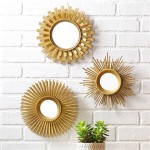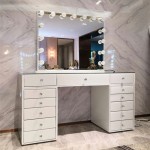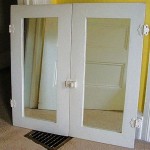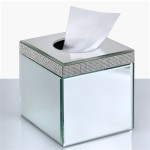Antique Silver Mirrors
Antique silver mirrors hold a unique allure, reflecting not just images but also glimpses into history and craftsmanship. Their reflective surfaces, often bearing the marks of time, add depth and character to any space. This article delves into the world of antique silver mirrors, exploring their characteristics, identification, care, and value.
Identifying Antique Silver Mirrors
Authenticating antique silver mirrors requires careful observation and knowledge of historical periods and techniques. Several key factors contribute to accurate identification:
1. Glass: Early mirrors utilized blown glass, resulting in slight imperfections and irregularities in the surface. Later periods saw the introduction of plate glass, which offers a more uniform reflection. Bubbles, waves, and distortions in the glass often indicate an older mirror.
2. Silvering: Antique mirrors employed a silvering process using mercury and tin. Over time, this silvering can deteriorate, causing foxing, black spots, or a hazy appearance. This aging, while considered a flaw in modern mirrors, is a sign of authenticity and adds to the antique mirror's charm.
3. Backing: Examining the back of the mirror can reveal clues about its age. Early backings were often made of wood or a composite material. Later mirrors might have a cardboard or paper backing. Evidence of old repairs or replacements can also indicate age.
4. Frame: The frame is often a significant indicator of the mirror's age and style. Examining the frame's material, construction, and decorative elements can provide valuable insights. Look for signs of hand-carving, gilding, or other period-specific techniques.
5. Size and Shape: The dimensions and form of the mirror can sometimes suggest its age. Large, elaborately framed mirrors were more common in grand homes of earlier centuries, while smaller, simpler mirrors might have been used in more modest settings.
Caring for Antique Silver Mirrors
Preserving the beauty and integrity of antique silver mirrors requires specialized care. Improper cleaning or handling can damage the delicate silvering and frame. The following tips can help maintain these valuable pieces:
1. Dusting: Regularly dust the mirror's frame and glass with a soft, dry cloth. Avoid using feather dusters, as they can scratch the surface. A gentle brush can help remove dust from intricate carvings.
2. Cleaning the Glass: Avoid using harsh chemical cleaners on the glass. Instead, opt for a mixture of distilled water and white vinegar. Gently apply the solution with a soft cloth, avoiding oversaturation. Dry immediately with a clean, lint-free cloth.
3. Handling: Always handle antique mirrors with care. Lift them by the frame, never by the glass or hanging hardware. Avoid placing pressure on the glass surface, as this can cause cracking or damage to the silvering.
4. Environment: Protect antique mirrors from extreme temperatures, humidity, and direct sunlight. These factors can accelerate deterioration of the silvering and the frame. Choose a stable environment for display and storage.
5. Professional Restoration: For significant damage or deterioration, consult a professional conservator specializing in antique mirrors. They have the expertise and tools to perform repairs and restoration without further harming the piece.
Valuing Antique Silver Mirrors
Several factors influence the value of antique silver mirrors, making each piece unique. Understanding these elements can provide insight into a mirror's potential worth:
1. Age and Rarity: Older and rarer mirrors generally command higher prices, especially those from significant historical periods or with unique features. Mirrors from renowned manufacturers or designers are also highly sought after.
2. Condition: The condition of the mirror significantly impacts its value. Mirrors with minimal foxing, clear reflections, and undamaged frames are typically more valuable than those with extensive deterioration.
3. Size and Scale: Larger mirrors often hold greater value than smaller ones, particularly if they are in good condition and feature intricate frames.
4. Frame Design and Material: The frame's style, craftsmanship, and materials contribute significantly to the overall value. Elaborate carvings, gilding, and the use of precious metals or rare woods can substantially increase a mirror's worth.
5. Provenance: A documented history of ownership, especially if it includes notable individuals or families, can significantly enhance a mirror's value, adding to its historical importance.
6. Market Trends: The value of antiques is also influenced by current market trends. Styles and periods that are in high demand can command higher prices, while others may fluctuate in value over time.
7. Professional Appraisal: For accurate valuation, it is recommended to consult a qualified appraiser specializing in antique mirrors. They can provide an expert assessment based on the mirror's specific characteristics and current market conditions.

Antique Silver Wall Mirror 36cm X 55cm Flora Furniture

Empire Full Length Antique Silver Mirror 200cm X 100cm Mirrors Exclusive

Antique Silver Large Bordeaux Wall Mirror Barrett Castle Lighting

Large Crested Mirror Louis Philippe Antique Silver 2 Sizes English Decorations

Antique French Silverleafed Archtop With Cream Cartouche In Mirrors

Mirrors In Antique Sterling Silver Bryan Douglas

Oval Antique Silver Coating Mirror For Home Size 51x6x70cm Lxwxh

Large Silver Gilt Antique Style Wall Mounted Mirror Arched 6ft4 X 4ft6 192x134cm

Antique Silver Swept Regal Mirror 220 00

The Annecy Mirror Antique Silver 4ft High 209 00 Mirrors Cau Luxury Furniture And Rococo Reion Baroque French Style Specialist








